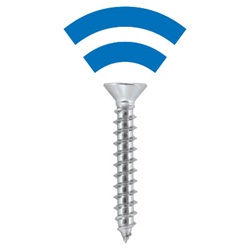Internal C-parts ordering

From our experience in the manufacturing industry, we know that many unnecessary hours are spent ordering the smallest parts of manufactured products: the C-parts.
C-parts generally have a low unit price, but due to the high variability used in manufacturing, this means that the purchasing department has to spend many hours ordering each individual part. Ordering an item worth one Euro will take the same amount of time as ordering larger parts worth hundreds or thousands of Euros.
The storage card, box and manual order entry work perfectly, right?
 Let's start with a tour of the production floor, where C-part inventory management is done using Kanban cards. It is currently time to reorder various small parts such as bolts, nuts, studs, etc., but the production employee who usually manages reorders is currently on vacation and his deputy suddenly realizes that the consumption of parts is greater than what is in the storage bins because there has been, for example, a larger order intake. He quickly starts collecting stock cards of items for the purchasing department that need to be ordered as soon as possible, otherwise 10 types of small parts will not be available in production next week.
Let's start with a tour of the production floor, where C-part inventory management is done using Kanban cards. It is currently time to reorder various small parts such as bolts, nuts, studs, etc., but the production employee who usually manages reorders is currently on vacation and his deputy suddenly realizes that the consumption of parts is greater than what is in the storage bins because there has been, for example, a larger order intake. He quickly starts collecting stock cards of items for the purchasing department that need to be ordered as soon as possible, otherwise 10 types of small parts will not be available in production next week.
The representative hurries up and hands the cards to the purchasing department, but inadvertently forgets to take the cards for the other 6 items that also need to be reordered. Meanwhile, the purchasing department has already placed the order and ordered the items with urgent delivery. Even though the forgotten Kanban cards for these 6 items are immediately ordered by the sales department, the supplier has meanwhile already packed and urgently dispatched the order with 10 kinds of items and hence the additional order for the 6 forgotten items is dispatched in a new urgent delivery at an additional urgent surcharge.
The next day the purchasing department finds out that 4 of the items ordered were already ordered by the production worker before his vacation started. He forwarded a handwritten request to the purchasing clerk, which was immediately ordered via email from the supplier, but the purchasing clerk did not update this completed order in the ERP/warehouse system until later.
The whole team gets into a situation where they spend a long time searching, checking, misunderstandings and duplicate orders. Too many employees waste time solving one problem that can be solved with modern warehouse technology.
Where do we usually waste the most time when ordering manually?
This story is a bit far-fetched, and of course most manufacturing companies have their ordering processes under control. But the fact remains that without digitizing the reorder process at the point of consumption, many employees have to spend time on a group of products that can be reordered automatically.
Wasted time is a critical cost factor included in labor costs. The time spent moving from one side of the production floor to the other, searching for the appropriate boxes and cards, and manually recording inventory levels could certainly be used more efficiently.
Here are some of the biggest time wasters in manual reordering:
- Too many employees are involved in the ordering process.
- Lack of visibility into inventory levels when key employees are not available.
- Risk of losing time because data is not immediately updated in the ERP system.
- Purchasing does not have visibility of what C-parts are actually in production.
- Loss of time by having to back-order goods instead of ordering based on the correct minimum/maximum requirement.
- Employees lose time when Kanban cards need to be physically moved from point A to point B.
- Kanban cards can easily be overlooked or discarded.
- Time is spent creating and laminating new Kanban cards when adding new groups of items.
3 hours a week!

On average, up to 3 hours a week is spent ordering and checking C-plots, even if the same story you just read doesn't happen. With automated ordering, this time can be saved.
Digital logistics systems like SmartBin can easily take over the entire reordering process and eliminate most of the time wastage.
Stay tuned to learn about how to prevent time loss in purchasing, production and C-parts warehouse, how to automate external reordering, replenishment process and how to automatically track inventory and missing items.

